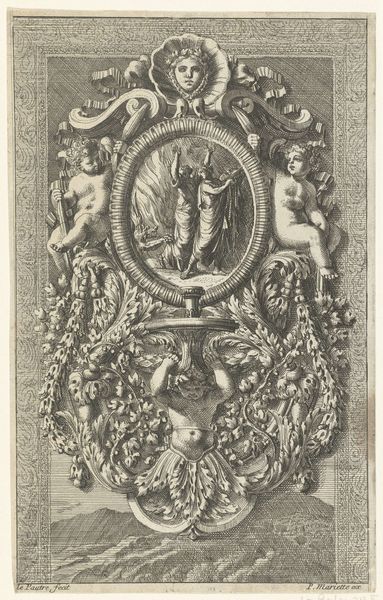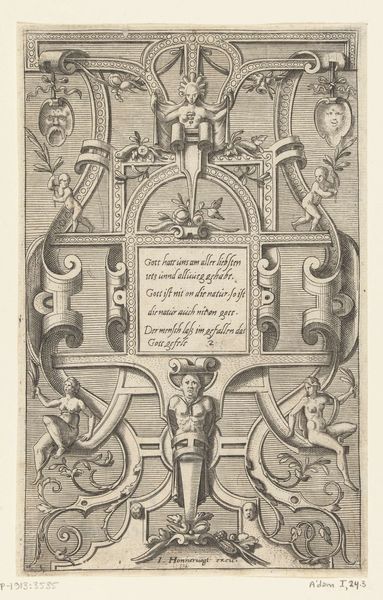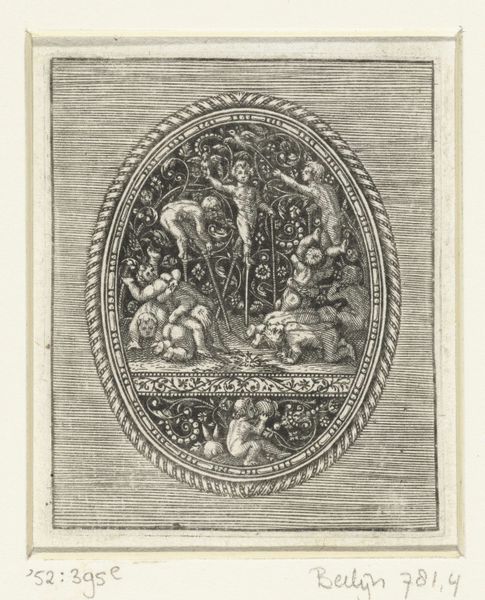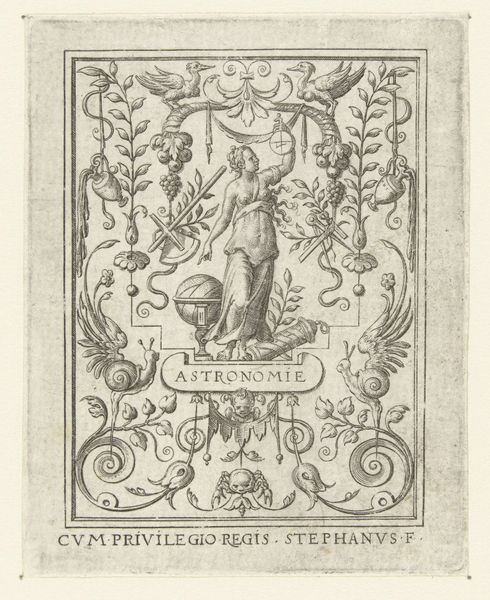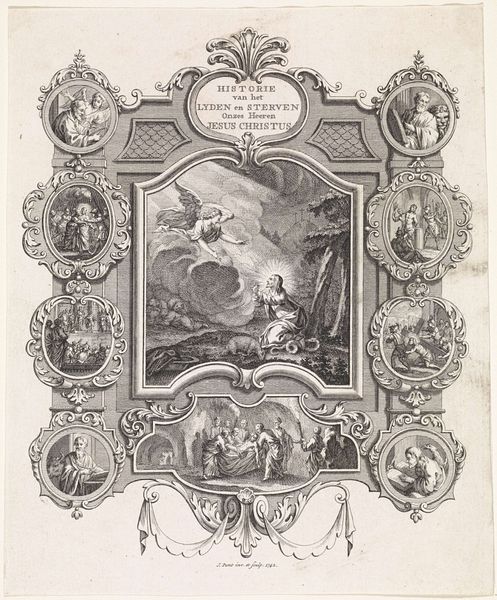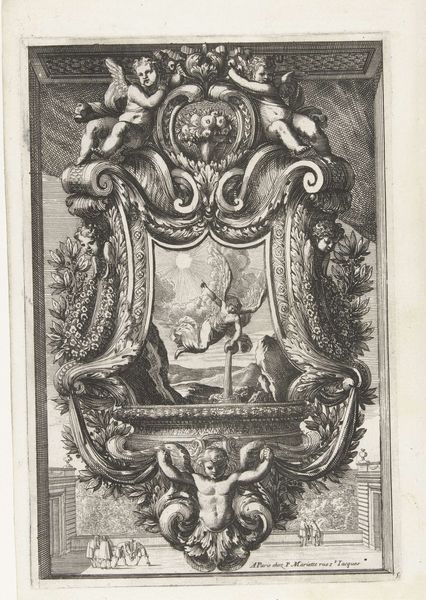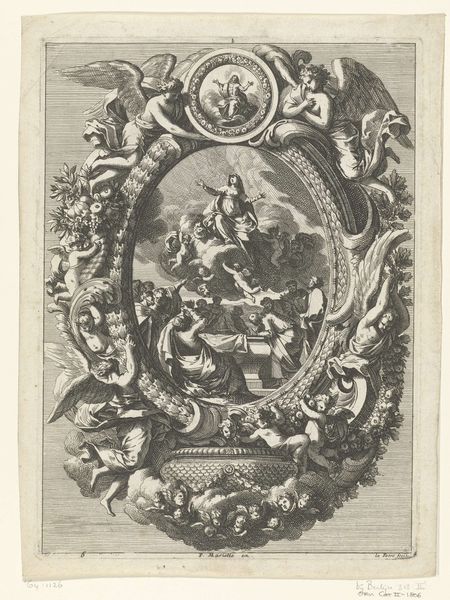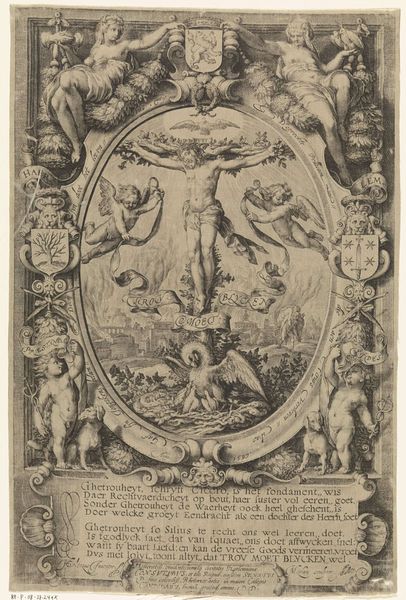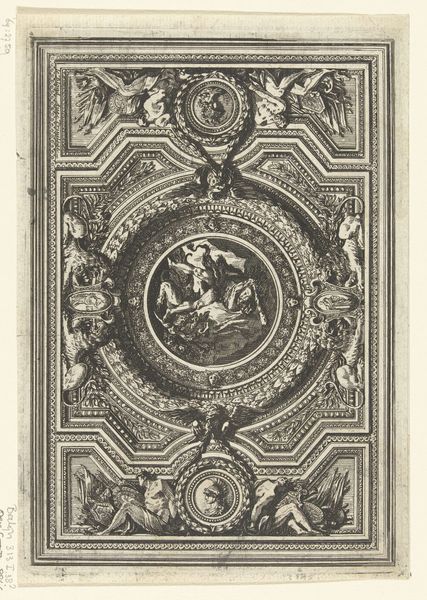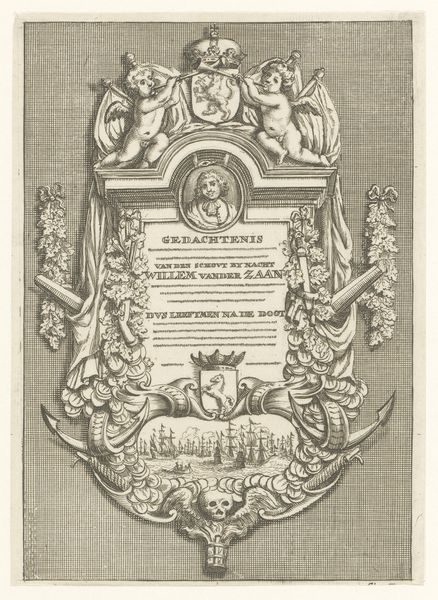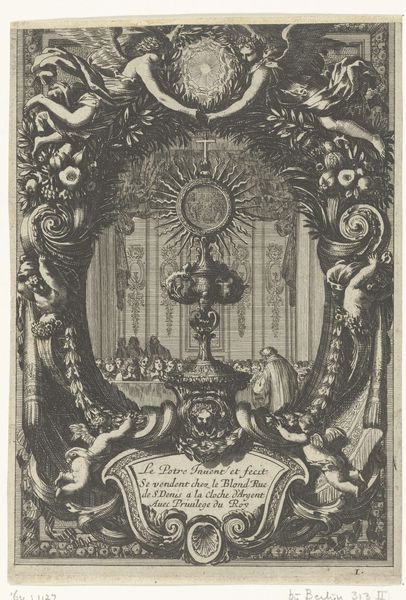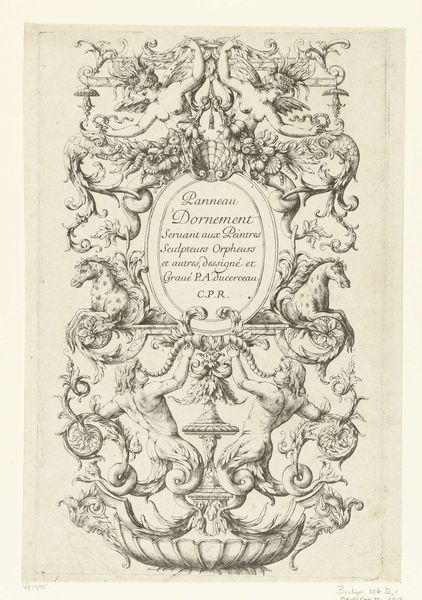
Dimensions: height 206 mm, width 137 mm
Copyright: Rijks Museum: Open Domain
Curator: The etching we're looking at, created by Pieter van der Heyden in 1566, is called "Titelblad, ovale cartouche ondersteund door twee saters". It resides here at the Rijksmuseum. What do you think of it? Editor: Intricate and busy! There's so much detail packed into this small space; my eye doesn't quite know where to land. I'm drawn to the symmetry, but the strange, almost grotesque figures are unsettling. Curator: Van der Heyden was working within a very specific social and economic context. Prints like these weren't just decorative, they were a crucial means of disseminating knowledge and ideas. The printing press allowed for the mass production of images, making art and information accessible to a wider audience than ever before. Think about the labor involved – the artist, the engraver, the printer, and the distribution networks. It speaks to a very particular moment in the history of printmaking. Editor: Agreed. Observing the forms though, the oval cartouche, supported by those satyrs – these strike me as deliberately theatrical. And the cherubic figures above are framed, balanced by the bestial creatures below. It has this quality that creates this tension of lightness and darkness throughout the piece. Curator: Absolutely. And don’t forget the role of Hieronymus Cock, the publisher. His workshop in Antwerp was a major hub for printmaking in the Netherlands. He essentially acted as a producer, commissioning artists like van der Heyden and ensuring their work reached the market. The inscription at the bottom speaks to that production aspect as well. It indicates this engraving served to introduce other pieces that had themes of poetry to it and produced under Cock. Editor: It’s interesting how you highlight Cock’s contribution, his workshop would have definitely employed artisans of different skill-levels, each specializing on certain labor-intensive tasks. Seeing how so much is owed to material culture here, do you find the heavy ornamentation distracting at all? The details really work together as a piece. Curator: Well, for the patrons of the time, they wouldn't be considering anything remotely to "distracting". As such this engraving would be intended to both celebrate and provide prestige through its refined craftsmanship to a printed media produced on the backs of specialized manual labor! It's very easy for our perceptions today to overlook such cultural relevance. Editor: Perhaps. Regardless, it’s this detailed elaboration that brings a strong voice to the artist behind this print and makes for an enthralling image. Curator: I'll concede that point. It’s always fascinating to unpack the layers of meaning embedded in these objects, recognizing both their aesthetic and cultural value.
Comments
No comments
Be the first to comment and join the conversation on the ultimate creative platform.
